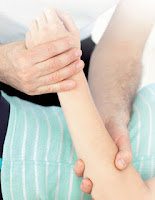 The immobility is the decreased ability to perform activities of daily living impairment of motor functions.
The immobility is the decreased ability to perform activities of daily living impairment of motor functions.
The main systems affected are the cardiovascular system and musculoskeletal system. But they are not unique, they are also affected: the respiratory system, nervous system, digestive system, the genitourinary system, the endocrine system and skin.
In the cardiovascular system, what happens is that there is a decreased energy expenditure and therefore left ventricular distensibility.
In the musculoskeletal system, what happens is that muscle strength decreases.
The 18% of those over 65 have trouble getting around without assistance and from 75 years, over 50% have trouble leaving home, of which 20% are confined to their homes.
Numerous studies or regular daily exercise in elderly, has beneficial effects on diabetes, hypertension, falls, the level of independence, osteoporosis and blood cholesterol level, among other benefits.
We recommend aerobic, flexibility, strength and balance, adapted to the situation of each and their needs.
The immobility can lead to depressive disorders and social isolation.
The elderly who have more risk of immobility are the sedentary and frail elderly, as explained above.
I think that immobility in the elderly is a problem with epidemiology and rises as nurses have an obligation to act against this, trying to prevent it, supporting patients and their families. If we do means many patients end up bedridden shortly.
So the make a proper comprehensive geriatric assessment is the best way to detect the risk of immobility.
_________________________________________________________________________
Bibliography:
1. Torres Haba R, Nieto de Haro MD. Inmovilidad. Tratado de Geriatría para residentes. Madrid: Sociedad española de geriatría y gerontología. 211-216.
 Constipation is a disturbance of intestinal transit, which is a decrease of stools, hard stools and painful bowel movements.
Constipation is a disturbance of intestinal transit, which is a decrease of stools, hard stools and painful bowel movements. The loss of function is very slow and there are very long courses (over 15 years), can be divided into:
The loss of function is very slow and there are very long courses (over 15 years), can be divided into: The immobility is the decreased ability to perform activities of daily living impairment of motor functions.
The immobility is the decreased ability to perform activities of daily living impairment of motor functions.
 According to the study by Gago et all, maceration is the most common problem when using dressings based on moist wound healing. Occurs when the exudate is poorly controlled, which saturates the surrounding skin and cause pain, slowing the evolution of the wound, increasing its size.
According to the study by Gago et all, maceration is the most common problem when using dressings based on moist wound healing. Occurs when the exudate is poorly controlled, which saturates the surrounding skin and cause pain, slowing the evolution of the wound, increasing its size.